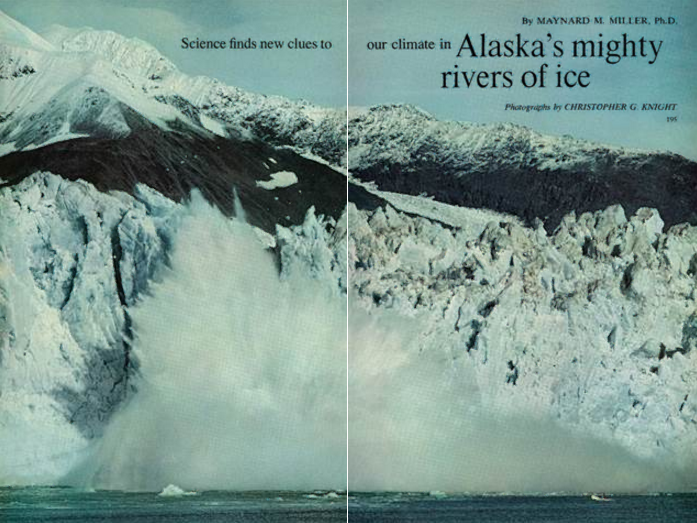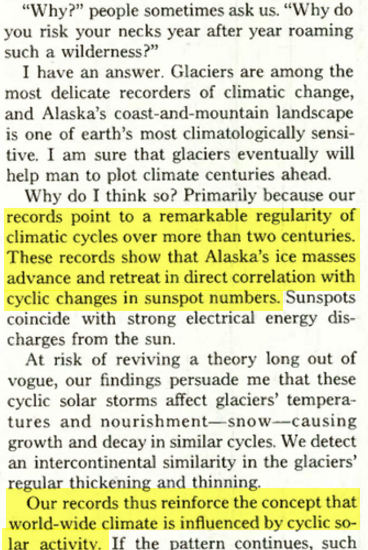Disrupting the Borg is expensive and time consuming!
Google Search
-
Recent Posts
- Extreme Weather
- 70C At Lisbon
- Grok Defending The Climate Scam
- “Earlier Than Usual”
- Perfect Correlation
- Elon’s Hockey Stick
- Latest Climate News
- “Climate dread is everywhere”
- “The Atmosphere Is ‘Thirstier.’”
- Skynet Becomes Self Aware
- “We Have To Vote For It So That You Can See What’s In It”
- Diversity Is Our Strength
- “even within the lifetime of our children”
- 60 Years Of Progress in London
- The Anti-Greta
- “a persistent concern”
- Deadliest US Tornado Days
- The Other Side Of The Pond
- “HEMI V8 Roars Back”
- Big Pharma Sales Tool
- Your Tax Dollars At Work
- 622 billion tons of new ice
- Fossil Fuels To Turn The UK Tropical
- 100% Tariffs On Chinese EV’s
- Fossil Fuels Cause Fungus
Recent Comments
- Charles Higley on 70C At Lisbon
- Charles Higley on 70C At Lisbon
- Charles Higley on 70C At Lisbon
- dm on Grok Defending The Climate Scam
- Bob G on “Earlier Than Usual”
- Bob G on 70C At Lisbon
- John Francis on “Climate dread is everywhere”
- John Francis on Perfect Correlation
- oeman50 on 70C At Lisbon
- Gordon Vigurs on Grok Defending The Climate Scam
1967 National Geographic : Direct Correlation Between Sunspots And Climate
This entry was posted in Uncategorized. Bookmark the permalink.





Scientists used to believe that sunspots were correlated with climate — but then they found there was more funding for disbelieving.
sigh… Of course that is snark on my part, but how an earth can “scientists” claim that there is no correlation between solar activity and climate? Yes, I know, total solar output stays nearly constant, but the spectrum of solar output changes. “Climate scientists” tell us that solar output spectrum changes do not make a difference, then turn around and say that tiny changes in our atmospheric absorption spectrum drive the planetary climate! Madness!
Solar Radiation: Sources of Energy for the Earth’s Atmosphere
(wwwDOT)nasa.gov/mission_pages/sdo/science/Solar%20Irradiance.html
***************************
Solar Radiation – – Energy Flux – Solar Cycle Change – Deposited
TSI mostly Vis & IR – 1366 W/m2 – 1.2 W/m2 – 0.1% – Surface
MUV (200-300 nm).- – 15.4 W/m2 – 0.17 W/m2 – 1% – 15-50 km
FUV (126-200 nm) – – 50 mW/m2 – 15 mW/m2 – 30% – 30-120 km
EUV (0-125 nm) – – -10 mW/m2 – 10 mW/m2 – 100% – 80-250 km
***************************
Ultraviolet light creates and destroys the ozone layer depending on the wavelength so the changes listed in that chart matter. A shift in the ratio will shift the amount of ozone created vs that destroyed. Ozone production is driven by UV radiation of wavelengths less than 240 nm. Ozone is a highly unstable molecule so when it absorbs low energy UV (240–310 nm) it splits into an ordinary oxygen molecule and a free oxygen atom.
In the three decades prior to the 2009 solar minimum and the switch to a ‘quiet sun (1979 to 2009) the amount of ultraviolet (UV) radiation reaching Earth’s surface increased markedly. This energy would be absorbed by the oceans at depths up to 100 meters.
We were on the right track 50 years ago. Imagine how far we could have come in our understanding of climate if the grantologists had not taken over.
+1
In more ways than one.
I think it was Judith Curry who said that we have lost an entire generation of atmospheric scientists to this sad little hoax.
The graph was supposed to be above, was I missing an “a href…/a”? I used img src(?)
http://www.woodfortrees.org/graph/sidc-ssn/from:1850/plot/hadcrut4gl/scale:50
And now for some breaking news! The sun warms the earth.
“…strong electrical energy discharges from the sun.”
https://www.youtube.com/watch?v=5AUA7XS0TvA
Sunspot count down to 26, and those spots are about to rotate away in a couple days, meaning zero spots soon? http://spaceweather.com/
Probably not. But possibly.